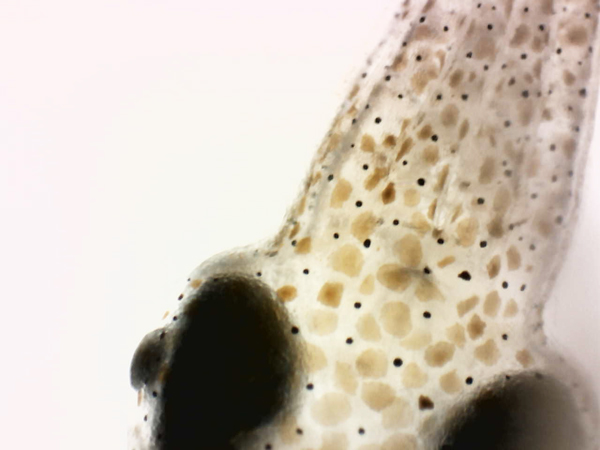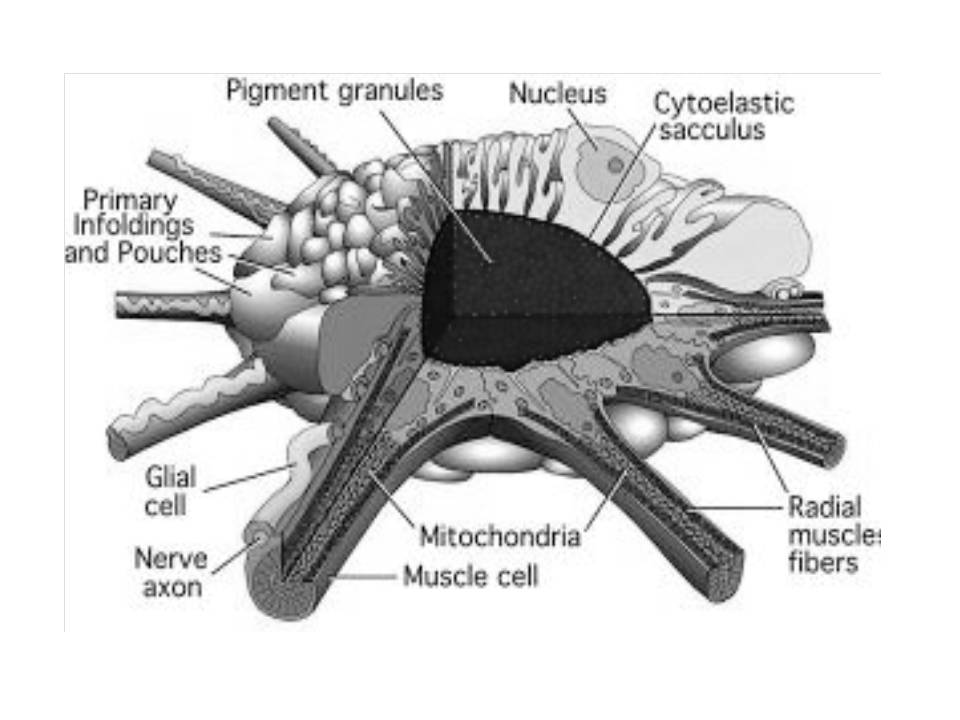Integumentary System
The integument (skin) of cephalopods is remarkable for its ability to change colour, pattern and texture extremely quickly. It has a thin outer layer, the epidermis, and an underlying dermal layer containing collagen fibres and the chromatic organs, including chromatophores and iridiocytes which make these displays of colour possible (Ruppert et al. 2004).
|

|
|
Chromatophores on the head and arms of I. notoides. The large dark masses are the eyes. Photograph by Samantha Reynolds.
|
The chromatophores of cephalopods are organs made up of five different cell types. They contain a single cell at the centre that has a large cavity filled with pigment granules which give the chromatophore its colour, typically yellow, brown, orange, red and in some species, black. This is surrounded by a set of radial muscles with associated nerves, glial cells which accompany the nerve axons and chromatophore sheath cells which cover the chromatophores. Expansion and contraction of the pigment cells produce colour changes in the skin of the animal. The control of the chromatophores differs amongst groups of cephalopods and possibly even amongst different colour classes of chromatophores in the same species (Messenger 2001). I. notoides was observed to have yellow, reddish-orange, brown and dark brown chromatophores (personal observation).
The iridiocytes are individual cells, containing layers of protein plates, that do not contain coloured pigment but have an elaborately folded plasma membrane that refracts and polarises the reflected light (Mäthger et al. 2009).
Some cephalopods also have the ability to change the texture of their skin and this is achieved using muscular hydrostatic structures called papillae which produce projections in the skin, changing its three-dimensional shape. This was not observed in I. notoides (personal observation) but is common in octopods and cuttlefish (Hanlon 2007).
 |
|
The classic drawing of a chromatophore by R.A. Cloney (Cloney and Florey 1968), the first based on electron microscopy. Taken from Messenger (2001).
|
|